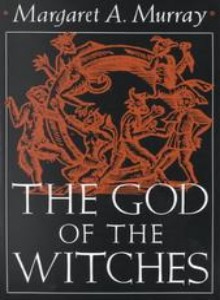Further to yesterday’s post on the Salem Witch Trials, the complete passage cited in that post is reproduced below.
What follows are a couple of further observations on Margaret Murray’s book and witch-craft.
I stumbled on something in the Masseys that may be important. The creative subconscious is potentially communicable, and so it’s different from the Freudian subconscious. It’s social & not individual—it has links with Jung’s collective unconscious, but I don’t know what they are. Finnegans Wake, anyway, is about that subconscious. Reading Margaret Murray’s books on witchcraft [The God of the Witches (London: Faber and Faber, 1952), and The Witch-Cult in Western Europe: A Study in Anthropology (Oxford: Clarendon Press, 1921)], one can’t believe any part of her argument that assumes an actual religious organization, but that some subconscious demonic parody of Xy [Christianity] was extracted from all those poor creatures under torture is quite obvious, and its consistency doesn’t surprise me: it’s the same kind of thing primitive tribes produce, often by self-administered torture. The witch-finder himself was a psychopath, or soon became one by sticking pins all over naked women, and so they were linked in a communal dream. [Northrop Frye Notebooks for “Anatomy of Criticism,” CW 23, 288]
[The reference to the Massey Lectures: “Ordinary life forms a community, and literature is among other things an art of communication, so it forms a community too. In ordinary life we fall into a private and separate subconscious every night, where we reshape the world according to a private and separate imagination. Underneath literature there is another kind of subconscious, which is social and not private, a need for forming a community around certain symbols. . . . This is the myth-making power of the human mind, which throws up and dissolves one civilization after another” [The Educated Imagination, CW 21, 474).]
The myth of the devil is ultimately the myth of the rejected projection. During the father-making-the-world phase the devil was Eros-Dionysus, & his dame the white goddess. I can’t buy Margaret Murray’s thesis that the horned-god cult actually existed, but that obscene parodies of Christian rituals could be extracted by torture in an obscene parody of psychotherapy is obvious enough. The false devil is the buried Orc, the pharmakos victim of the social anxiety-structure; the genuine devil is the prince of this world, & is usually identified with God. [The “Third Book” Notebooks of Northrop Frye, CW 9, 69]
[In The Witch-Cult in Western Europe (1921), Margaret Murray argued that what the Christian authorities called witchcraft was actually the survival, throughout the Middle Ages and up to the Reformation, of a pre-Christian fertility cult. A copy of Murray’s The God of the Witches (Garden City: Doubleday, 1960), is in the Northrop Frye Library at Victoria College.]
In Joyce’s Ulysses we have a Jewish father-figure, a Christian (so to speak) son-figure, a mother-wife-whore figure, and a spiritual visitant whose name suggests fire and water (Blazes Boylan). I think I see why HCE is Protestant: the descent into alienation is the real point of Protestantism. Also, many great cultures have arisen from an invasion which split society into an ascendant & a subjected class, the latter producing most of the women, & their indigenous beliefs forming the dark half of the culture. Thus Egypt; thus India; thus the North, where Grimm’s & Margaret Murray’s reconstructions of the submerged cult merge. [The “Third Book” Notebooks of Northrop Frye, CW 9, 268–9]


